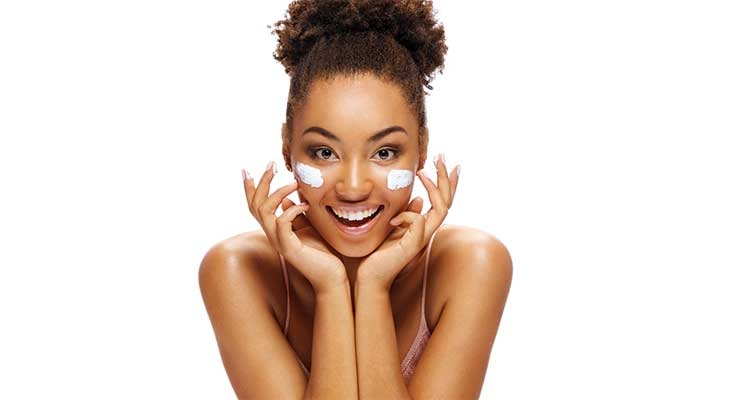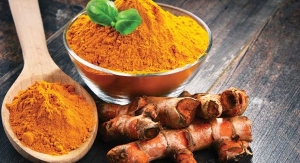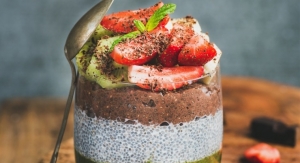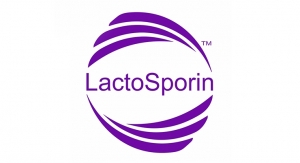By Sean Moloughney, Editor07.03.19
Increasingly, people are realizing that lifestyle decisions, including diet, reflect inner wellness and outward appearance. With a deeper understanding of the role nutrition plays for skin health, young men and women represent an emerging opportunity for brands. Overall, natural ingredients supported by science will appeal to a broad audience, experts have noted.
The largest organ of the body, skin functions to seal and protect, noted Shaheen Majeed, president worldwide, Sabinsa. “As the outermost protective layer, it faces a harsh environment and damage from various human activities.”
Skin is also a mirror of inner wellness, according to Karin Hermoni, PhD, head of science and nutrition at Lycored. “Our physical and emotional well-being are reflected in the way our skin looks. So when you think skin longevity or skin health across our lifespan, think general health, nutrition, lifestyle, and emotional state.”
A range of factors affecting skin health can be broadly categorized into intrinsic and extrinsic elements. “The extrinsic factors are the components of the living environment, while intrinsic factors are the result of human habits,” said Majeed.
For example, diet influences every physiological process, he continued. “A diet rich in antioxidants will nourish the skin. Studies have shown that a low antioxidant diet can severely affect the skin’s health through increased oxidative stress.”
Sleep is another common issue that can influence skin health. “It is well known that sleeping is critical for cellular growth, and reduced sleep time leads to disturbance in the circadian rhythm, which affects the normal functioning of various tissues, including skin,” said Majeed.
After age 25 skin begins to lose elasticity, said Samantha Ford, business development director, AIDP. “The youthful qualities of the skin will deteriorate rapidly, unless action is taken to support the skin’s intrinsic defense system.” Extrinsic and intrinsic aging reduce the number and quality of collagen fibers, she added. They also reduce the skin’s elasticity and uniformity.
The gut-skin connection is also becoming increasingly clear, noted Ford. “The gut acts as a major line of defense for the rest of the body. An imbalanced gut environment can lead to suboptimal function of the intestinal barrier. As a result, unwanted toxins can be produced, absorbed into the bloodstream, and accumulate in the skin. This can cause inflammation, degradation of collagen and elastin, and unhealthy skin appearance.”
According to Heather Arment, marketing coordinator, North America, GELITA, the consequences of decreasing collagen with age are that skin becomes drier, connective tissue relaxes, and the overall appearance of the skin deteriorates.
About 30% of total protein in the body is collagen, making it the most abundant form, she noted. One of the primary structural proteins of connective tissues, collagen is what gives skin its firm structure. “So collagen supplementation helps us to stay beautiful for longer.”
Diet, stress, and environmental toxins affect everyone, noted Suhail Ishaq, president of BioCell Technology, LLC. “Nutrition is a skin health area that is often neglected or misunderstood and it can be a major difference-maker. Getting the right nutrition in your diet and in your personal care routine is essential for good skin health and optimal skin appearance in all life stages.”
Overall, many factors affect skin health across the lifespan, said Elyse Lovett, senior marketing manager, Kyowa Hakko USA, “including the foods you put into your body, exposure to the sun, genetics, and the environment. We have been learning how free radicals (caused by sun exposure, pollution, unhealthy food and lifestyle choices) are really affecting skin health.”
Most consumers understand the role that UV exposure plays for skin health, said Sébastien Bornet, vice president of global sales and marketing at Horphag Research. However, recently the connection between lifestyle habits and diet on skin is becoming better understood. “Other factors such as stress, pollution, tobacco, or menopause can result in premature skin aging as well. They can see that these factors increase oxidative stress and cause cellular damage that can accelerate skin’s natural aging process and they’re seeking natural ingredients supported by science to care for their skin.”
Giada Maramaldi, technical and scientific manager, Personal Care, Indena, noted that frequent/prolonged exposure to sunlight, a pro-oxidative diet, smoke, inflammation, and glycation are hidden, chronic conditions affecting skin health.
Caring for skin health with natural products is a tradition in many cultures, she added. “In several traditional medicines, poultices and topical applications of various herbs are present. From some of these traditions, for instance from the Makua tribe of Mozambique, the poultice of a plant of the species Ximenia is claimed to endow the Makua women with the most beautiful skin of all Africa. Traditions apart, currently the daily routine for skin care is highly sophisticated in Asia, with Korea and Japan playing major roles as trend setters.”
Rod Benjamin, director of R&D and technical services, Bergstrom Nutrition, said skin naturally becomes dryer with age. “Additionally, collagen and elastin begin to break down leading to an increase in visible wrinkles. This natural process can be accelerated and amplified by both external factors (such as diet and over-exposure to the sun and pollution) and internal factors (such as genetics, hormones and certain diseases like diabetes).”
It’s important to remember that all skin ages intrinsically, said Eric Withee, sales director, Bergstrom Nutrition. “As we age, we produce less of the proteins naturally found in skin, like collagen, hyaluronic acid, and fibrin. However, it is possible to slow this process by protecting the skin from damage and providing targeted nutritional supplements.”
An Attractive Market
Increasingly, ingestible skin care is becoming more mainstream and, the “beauty from within” message is resonating with consumers, according to Hermoni. “There is growing understanding in the public that wellness and beauty are two sides of the same coin and that true beauty starts from the inside.” The emergence of high-spending millennials and appearance-conscious young men represent major opportunities for brands, she added.
Rapidly changing lifestyles and increased awareness about the impact of environmental pollution, stress, UV exposure, skin allergies, and aging on skin health are compelling consumers to consider skin care options, according to Majeed. “The demand for products that are safe, efficient, and innovative has increased in recent years. Safety is one of the major decision-making criteria while choosing the skin care products.”
Skin health and longevity have become important matters for young people, according to Ishaq. “Consumers who are invested in their skin health know it’s better to start early and to make it a lifetime practice. For consumers over 40, the main areas of focus are healthy aging and repairing sun damage. Those in their 30s start to notice the first signs of change and they seek preventive measures. We see consumers in their 20s start to invest in more upscale skin health measures and nutrition.”
Appearance and healthy skin is relevant to all consumers, independent of age, Arment said. “With the global population living longer, consumers strive to live longer, better. And they want to look better while aging, too. But today’s consumers are more informed than ever and know that exercise, proper nutrition, and supplementation are important in helping to delay natural aging—helping them to look and feel their best.”
Overall, Bornet said there’s been a shift in the consumer audience interested in skin health supplements. “There’s been significant growth in the skin health market from younger men and women as more young individuals become interested in starting skin health routines to prevent issues later in life.”
He added, “There’s a deeper understanding of the role nutrition plays for skin health and the idea of healthy skin from the inside-out.”
Lovett agreed that younger demographics in particular are buying into beauty from within. “How to keep the skin from aging, how to keep the skin glowing, how to reduce wrinkles, and just overall great skin health are really top of mind.”
Age is still the most important demographic factor when fulfilling consumers’ skin health needs, according to Withee. “Reducing blemishes and finding a balance between oily and dry skin top the list of primary concerns for those under approximately 25 years of age. After consumers pass the 25-30 age range, the aging of their skin becomes the primary concern.”
They are looking for ways to prevent signs of aging while also supporting underlying skin health, he said. “Although ongoing support is important, the primary objective for older consumers is repairing existing damage or aged skin through reducing the appearance of wrinkles and improving elasticity.”
Ingredient Focus
Produced with elastin and proteoglycans in the deeper layers of the skin, collagen molecules are essential for skin elasticity and resistance, according to Arment. “While collagen has been used in products applied to the skin for years, recent scientific evidence confirms that consuming collagen supplements as part of your diet has a much more long-term effect than topical products.”
As consumers are better educated about the correlation between skin health and nutrition, they are also becoming more interested in understanding how these products work together, she continued.
“This means consumers will favor products with the greatest amount of scientific research and substantiation to support them. Specialized Bioactive Collagen Peptides like those offered by GELITA are supported by high-level clinical research and a robust body of scientific substantiation. Now, because of GELITA’s leadership and work in this category, consumers have begun to realize that long-lasting and scientifically proven benefits come from the inside.”
Collagen and hyaluronic acid are core components of skin and its extracellular matrix, noted Ishaq. “Together they lay the foundation of our skin’s health, elasticity, and smooth appearance. As aging is closely associated with the loss of collagen and hyaluronic acid, and the deterioration of the connective tissue, supplementation of bioavailable hyaluronic acid and collagen peptides helps to counteract the consequences.”
BioCell Collagen is a branded dietary ingredient composed of a unique matrix of hydrolyzed collagen type II, chondroitin sulfate, and hyaluronic acid that has been shown to promote connective tissue health of the joints and skin.
Results from a recent 12-week, double-blind, placebo-controlled clinical trial involving BioCell Collagen, set to publish in Alternative Therapies in Health and Medicine, showed that for the 113 participants completing the study, BioCell Collagen supplementation compared to a placebo resulted in significantly reduced facial lines and wrinkles; increased skin elasticity and cutaneous collagen content by 12%; improved indicators associated with a more youthful skin appearance based on visual grading and wrinkle width; and decreased skin dryness and erythema.
Type I collagen plays an essential role in maintaining skin tone, suppleness, and elasticity, according to Ford. “However, collagen synthesis reduces at a rate of 1.5% per year after the age of 25.”
The external effects are the appearance of wrinkles, fine lines, and dry skin, she added. “Naticol is a natural source of Type I collagen peptides. It is produced from 100% fish skin and scales through a validated and safe process in Europe. It is bioavailable, allowing the body to circulate necessary amino acids used in collagen fibril synthesis and other connective tissues. “
Many people know of the important role collagen and elastin play in skin care, but sulfur is frequently overlooked as a critical component for healthy skin, according to Benjamin. “Sulfur helps stabilize and provide the disulfide bonds necessary for the proper cross-linking of these key proteins. Methylsulfonylmethane can provide this necessary sulfur nutrient and has also been shown to reduce oxidative stress, which also damages skin.”
OptiMSM provides many benefits for skin health and appearance, said Withee. “Daily oral supplementation reduces both deep and fine line wrinkles, increases both elasticity and firmness, and evens skin tone. The benefits of OptiMSM can be partially attributed to its role as an efficient source of dietary sulfur (34% by weight). Additionally, OptiMSM improves levels of the body’s natural antioxidants, like glutathione and SOD. And by inhibiting the formation of inflammatory cytokines, OptiMSM maintains a balance between the formation and degradation of collagen in skin cells.”
Lovett noted that glutathione, typically used in Southeast Asia for skin whitening, is getting more attention in the U.S. for its benefits in skin brightening and its ability to not only fight free radicals in the body but also regenerate other important nutrients like vitamins C and E. “Glutathione is made endogenously in the body (in most cells), but as we age, poor lifestyle choices, environment, and stress all contribute to reduced glutathione production in the body, so supplementation is important. Kyowa Hakko produces Setria, the branded form of glutathione which has been shown to increase body stores of glutathione as well as support skin brightening and wrinkle reduction in women over 40.”
Horphag’s flagship ingredient, Pycnogenol French maritime pine bark extract, is used in oral and topical products for a variety of skin care applications, noted Bornet. “Pycnogenol has been shown in research to increase skin’s hydration and to improve elasticity. Known as nature’s super antioxidant, Pycnogenol selectively binds to collagen and elastin to reduce the appearance of fine lines and wrinkles. Pycnogenol is also shown to stimulate the production of hyaluronic acid and collagen.”
Majeed said Sabinsa’s uC3 Clear soluble form of curcumin is ideal for beauty beverages. The company has also recently introduced LactoSporin, a topical ingredient derived from LactoSpore Bacillus coagulans MTCC 5856, for cosmeceutical skin and hair care products. The ingredient has antimicrobial, antioxidant, anti-inflammatory, anti-collagenase, and anti-glycation properties, according to the company. “It also shows protective efficacy against UV radiation and induces hair growth,” said Majeed.
Maramaldi noted the skin is particularly vulnerable to “the glycation mechanism, a reaction occurring when a sugar like glucose or fructose and proteins, lipids, or DNA interact non-enzymatically, leading to the production of glycotoxins (Advanced Glycation Endproduct, AGEs, and Advanced Lipoxidation Endproducts, ALEs). There are no enzymes able to remove AGEs and ALEs. Skin is subject to glycation due to its richness in collagen and with a slow turnover. Glycated collagen starts accumulating at the age of 20 and goes on with a yearly rate of 3.7% increase on average.”
Polyphenols from botanical origin promote antioxidant and anti-inflammatory defenses, “and may play a role in counteracting the damage induced by chronic inflammation, known as ‘inflammaging,’ and glycation,” said Maramaldi.
According to Hermoni, carotenoids and other phytonutrients such as the naturally occurring vitamins A and E found in tomato can synergistically balance skin from environmental stresses. “This is done by providing an additional complementary layer of support from UV rays at the molecular level by boosting skin’s natural defensive mechanisms. As a result, skin wellness is enhanced at the foundational level, and skin cells are better able to cope with environmental challenges and maintain normal oxidative and inflammatory status.”
A recent double-blind, placebo-controlled clinical trial with a total of 145 healthy subjects sought to examine efficacy and explore the protective potential of Lycoderm in enhancing skin resilience and balancing skin response to UV challenge. “The outcomes of the study provide specific evidence for the bioavailability of the entire carotenoid composition allowing not only the proper nourishment of body and skin, but also balancing skin response to UV,” said Hermoni.
The largest organ of the body, skin functions to seal and protect, noted Shaheen Majeed, president worldwide, Sabinsa. “As the outermost protective layer, it faces a harsh environment and damage from various human activities.”
Skin is also a mirror of inner wellness, according to Karin Hermoni, PhD, head of science and nutrition at Lycored. “Our physical and emotional well-being are reflected in the way our skin looks. So when you think skin longevity or skin health across our lifespan, think general health, nutrition, lifestyle, and emotional state.”
A range of factors affecting skin health can be broadly categorized into intrinsic and extrinsic elements. “The extrinsic factors are the components of the living environment, while intrinsic factors are the result of human habits,” said Majeed.
For example, diet influences every physiological process, he continued. “A diet rich in antioxidants will nourish the skin. Studies have shown that a low antioxidant diet can severely affect the skin’s health through increased oxidative stress.”
Sleep is another common issue that can influence skin health. “It is well known that sleeping is critical for cellular growth, and reduced sleep time leads to disturbance in the circadian rhythm, which affects the normal functioning of various tissues, including skin,” said Majeed.
After age 25 skin begins to lose elasticity, said Samantha Ford, business development director, AIDP. “The youthful qualities of the skin will deteriorate rapidly, unless action is taken to support the skin’s intrinsic defense system.” Extrinsic and intrinsic aging reduce the number and quality of collagen fibers, she added. They also reduce the skin’s elasticity and uniformity.
The gut-skin connection is also becoming increasingly clear, noted Ford. “The gut acts as a major line of defense for the rest of the body. An imbalanced gut environment can lead to suboptimal function of the intestinal barrier. As a result, unwanted toxins can be produced, absorbed into the bloodstream, and accumulate in the skin. This can cause inflammation, degradation of collagen and elastin, and unhealthy skin appearance.”
According to Heather Arment, marketing coordinator, North America, GELITA, the consequences of decreasing collagen with age are that skin becomes drier, connective tissue relaxes, and the overall appearance of the skin deteriorates.
About 30% of total protein in the body is collagen, making it the most abundant form, she noted. One of the primary structural proteins of connective tissues, collagen is what gives skin its firm structure. “So collagen supplementation helps us to stay beautiful for longer.”
Diet, stress, and environmental toxins affect everyone, noted Suhail Ishaq, president of BioCell Technology, LLC. “Nutrition is a skin health area that is often neglected or misunderstood and it can be a major difference-maker. Getting the right nutrition in your diet and in your personal care routine is essential for good skin health and optimal skin appearance in all life stages.”
Overall, many factors affect skin health across the lifespan, said Elyse Lovett, senior marketing manager, Kyowa Hakko USA, “including the foods you put into your body, exposure to the sun, genetics, and the environment. We have been learning how free radicals (caused by sun exposure, pollution, unhealthy food and lifestyle choices) are really affecting skin health.”
Most consumers understand the role that UV exposure plays for skin health, said Sébastien Bornet, vice president of global sales and marketing at Horphag Research. However, recently the connection between lifestyle habits and diet on skin is becoming better understood. “Other factors such as stress, pollution, tobacco, or menopause can result in premature skin aging as well. They can see that these factors increase oxidative stress and cause cellular damage that can accelerate skin’s natural aging process and they’re seeking natural ingredients supported by science to care for their skin.”
Giada Maramaldi, technical and scientific manager, Personal Care, Indena, noted that frequent/prolonged exposure to sunlight, a pro-oxidative diet, smoke, inflammation, and glycation are hidden, chronic conditions affecting skin health.
Caring for skin health with natural products is a tradition in many cultures, she added. “In several traditional medicines, poultices and topical applications of various herbs are present. From some of these traditions, for instance from the Makua tribe of Mozambique, the poultice of a plant of the species Ximenia is claimed to endow the Makua women with the most beautiful skin of all Africa. Traditions apart, currently the daily routine for skin care is highly sophisticated in Asia, with Korea and Japan playing major roles as trend setters.”
Rod Benjamin, director of R&D and technical services, Bergstrom Nutrition, said skin naturally becomes dryer with age. “Additionally, collagen and elastin begin to break down leading to an increase in visible wrinkles. This natural process can be accelerated and amplified by both external factors (such as diet and over-exposure to the sun and pollution) and internal factors (such as genetics, hormones and certain diseases like diabetes).”
It’s important to remember that all skin ages intrinsically, said Eric Withee, sales director, Bergstrom Nutrition. “As we age, we produce less of the proteins naturally found in skin, like collagen, hyaluronic acid, and fibrin. However, it is possible to slow this process by protecting the skin from damage and providing targeted nutritional supplements.”
An Attractive Market
Increasingly, ingestible skin care is becoming more mainstream and, the “beauty from within” message is resonating with consumers, according to Hermoni. “There is growing understanding in the public that wellness and beauty are two sides of the same coin and that true beauty starts from the inside.” The emergence of high-spending millennials and appearance-conscious young men represent major opportunities for brands, she added.
Rapidly changing lifestyles and increased awareness about the impact of environmental pollution, stress, UV exposure, skin allergies, and aging on skin health are compelling consumers to consider skin care options, according to Majeed. “The demand for products that are safe, efficient, and innovative has increased in recent years. Safety is one of the major decision-making criteria while choosing the skin care products.”
Skin health and longevity have become important matters for young people, according to Ishaq. “Consumers who are invested in their skin health know it’s better to start early and to make it a lifetime practice. For consumers over 40, the main areas of focus are healthy aging and repairing sun damage. Those in their 30s start to notice the first signs of change and they seek preventive measures. We see consumers in their 20s start to invest in more upscale skin health measures and nutrition.”
Appearance and healthy skin is relevant to all consumers, independent of age, Arment said. “With the global population living longer, consumers strive to live longer, better. And they want to look better while aging, too. But today’s consumers are more informed than ever and know that exercise, proper nutrition, and supplementation are important in helping to delay natural aging—helping them to look and feel their best.”
Overall, Bornet said there’s been a shift in the consumer audience interested in skin health supplements. “There’s been significant growth in the skin health market from younger men and women as more young individuals become interested in starting skin health routines to prevent issues later in life.”
He added, “There’s a deeper understanding of the role nutrition plays for skin health and the idea of healthy skin from the inside-out.”
Lovett agreed that younger demographics in particular are buying into beauty from within. “How to keep the skin from aging, how to keep the skin glowing, how to reduce wrinkles, and just overall great skin health are really top of mind.”
Age is still the most important demographic factor when fulfilling consumers’ skin health needs, according to Withee. “Reducing blemishes and finding a balance between oily and dry skin top the list of primary concerns for those under approximately 25 years of age. After consumers pass the 25-30 age range, the aging of their skin becomes the primary concern.”
They are looking for ways to prevent signs of aging while also supporting underlying skin health, he said. “Although ongoing support is important, the primary objective for older consumers is repairing existing damage or aged skin through reducing the appearance of wrinkles and improving elasticity.”
Ingredient Focus
Produced with elastin and proteoglycans in the deeper layers of the skin, collagen molecules are essential for skin elasticity and resistance, according to Arment. “While collagen has been used in products applied to the skin for years, recent scientific evidence confirms that consuming collagen supplements as part of your diet has a much more long-term effect than topical products.”
As consumers are better educated about the correlation between skin health and nutrition, they are also becoming more interested in understanding how these products work together, she continued.
“This means consumers will favor products with the greatest amount of scientific research and substantiation to support them. Specialized Bioactive Collagen Peptides like those offered by GELITA are supported by high-level clinical research and a robust body of scientific substantiation. Now, because of GELITA’s leadership and work in this category, consumers have begun to realize that long-lasting and scientifically proven benefits come from the inside.”
Collagen and hyaluronic acid are core components of skin and its extracellular matrix, noted Ishaq. “Together they lay the foundation of our skin’s health, elasticity, and smooth appearance. As aging is closely associated with the loss of collagen and hyaluronic acid, and the deterioration of the connective tissue, supplementation of bioavailable hyaluronic acid and collagen peptides helps to counteract the consequences.”
BioCell Collagen is a branded dietary ingredient composed of a unique matrix of hydrolyzed collagen type II, chondroitin sulfate, and hyaluronic acid that has been shown to promote connective tissue health of the joints and skin.
Results from a recent 12-week, double-blind, placebo-controlled clinical trial involving BioCell Collagen, set to publish in Alternative Therapies in Health and Medicine, showed that for the 113 participants completing the study, BioCell Collagen supplementation compared to a placebo resulted in significantly reduced facial lines and wrinkles; increased skin elasticity and cutaneous collagen content by 12%; improved indicators associated with a more youthful skin appearance based on visual grading and wrinkle width; and decreased skin dryness and erythema.
Type I collagen plays an essential role in maintaining skin tone, suppleness, and elasticity, according to Ford. “However, collagen synthesis reduces at a rate of 1.5% per year after the age of 25.”
The external effects are the appearance of wrinkles, fine lines, and dry skin, she added. “Naticol is a natural source of Type I collagen peptides. It is produced from 100% fish skin and scales through a validated and safe process in Europe. It is bioavailable, allowing the body to circulate necessary amino acids used in collagen fibril synthesis and other connective tissues. “
Many people know of the important role collagen and elastin play in skin care, but sulfur is frequently overlooked as a critical component for healthy skin, according to Benjamin. “Sulfur helps stabilize and provide the disulfide bonds necessary for the proper cross-linking of these key proteins. Methylsulfonylmethane can provide this necessary sulfur nutrient and has also been shown to reduce oxidative stress, which also damages skin.”
OptiMSM provides many benefits for skin health and appearance, said Withee. “Daily oral supplementation reduces both deep and fine line wrinkles, increases both elasticity and firmness, and evens skin tone. The benefits of OptiMSM can be partially attributed to its role as an efficient source of dietary sulfur (34% by weight). Additionally, OptiMSM improves levels of the body’s natural antioxidants, like glutathione and SOD. And by inhibiting the formation of inflammatory cytokines, OptiMSM maintains a balance between the formation and degradation of collagen in skin cells.”
Lovett noted that glutathione, typically used in Southeast Asia for skin whitening, is getting more attention in the U.S. for its benefits in skin brightening and its ability to not only fight free radicals in the body but also regenerate other important nutrients like vitamins C and E. “Glutathione is made endogenously in the body (in most cells), but as we age, poor lifestyle choices, environment, and stress all contribute to reduced glutathione production in the body, so supplementation is important. Kyowa Hakko produces Setria, the branded form of glutathione which has been shown to increase body stores of glutathione as well as support skin brightening and wrinkle reduction in women over 40.”
Horphag’s flagship ingredient, Pycnogenol French maritime pine bark extract, is used in oral and topical products for a variety of skin care applications, noted Bornet. “Pycnogenol has been shown in research to increase skin’s hydration and to improve elasticity. Known as nature’s super antioxidant, Pycnogenol selectively binds to collagen and elastin to reduce the appearance of fine lines and wrinkles. Pycnogenol is also shown to stimulate the production of hyaluronic acid and collagen.”
Majeed said Sabinsa’s uC3 Clear soluble form of curcumin is ideal for beauty beverages. The company has also recently introduced LactoSporin, a topical ingredient derived from LactoSpore Bacillus coagulans MTCC 5856, for cosmeceutical skin and hair care products. The ingredient has antimicrobial, antioxidant, anti-inflammatory, anti-collagenase, and anti-glycation properties, according to the company. “It also shows protective efficacy against UV radiation and induces hair growth,” said Majeed.
Maramaldi noted the skin is particularly vulnerable to “the glycation mechanism, a reaction occurring when a sugar like glucose or fructose and proteins, lipids, or DNA interact non-enzymatically, leading to the production of glycotoxins (Advanced Glycation Endproduct, AGEs, and Advanced Lipoxidation Endproducts, ALEs). There are no enzymes able to remove AGEs and ALEs. Skin is subject to glycation due to its richness in collagen and with a slow turnover. Glycated collagen starts accumulating at the age of 20 and goes on with a yearly rate of 3.7% increase on average.”
Polyphenols from botanical origin promote antioxidant and anti-inflammatory defenses, “and may play a role in counteracting the damage induced by chronic inflammation, known as ‘inflammaging,’ and glycation,” said Maramaldi.
According to Hermoni, carotenoids and other phytonutrients such as the naturally occurring vitamins A and E found in tomato can synergistically balance skin from environmental stresses. “This is done by providing an additional complementary layer of support from UV rays at the molecular level by boosting skin’s natural defensive mechanisms. As a result, skin wellness is enhanced at the foundational level, and skin cells are better able to cope with environmental challenges and maintain normal oxidative and inflammatory status.”
A recent double-blind, placebo-controlled clinical trial with a total of 145 healthy subjects sought to examine efficacy and explore the protective potential of Lycoderm in enhancing skin resilience and balancing skin response to UV challenge. “The outcomes of the study provide specific evidence for the bioavailability of the entire carotenoid composition allowing not only the proper nourishment of body and skin, but also balancing skin response to UV,” said Hermoni.


























